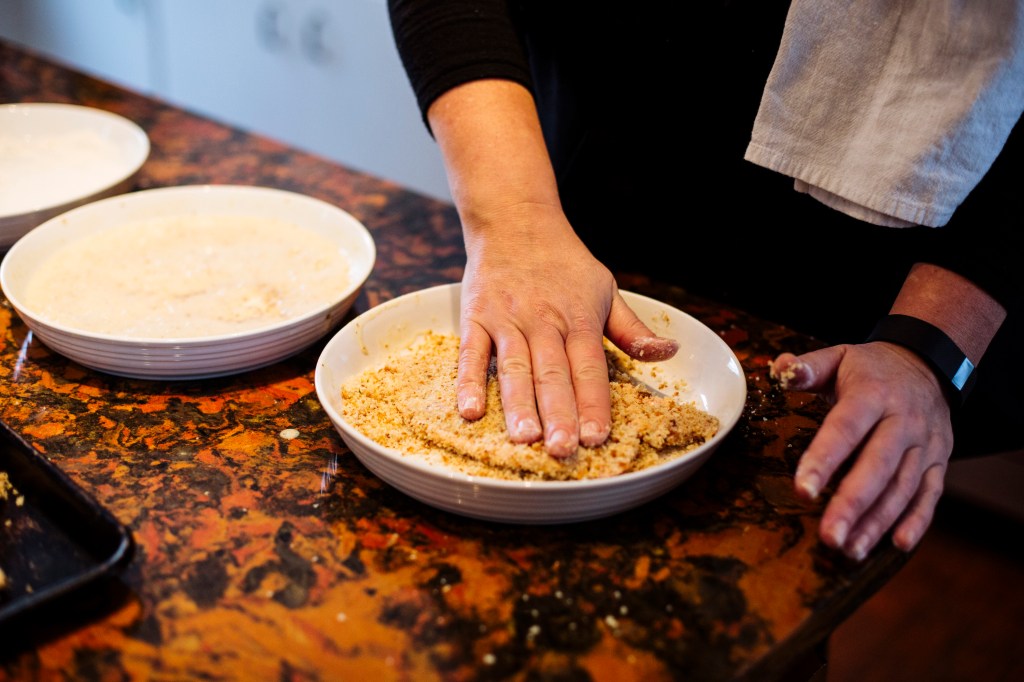I learned a new word this week: concomitant. It means “accompanying,” especially in an incidental way.
This vocabulary boost came concomitantly to my trying to understand why the new Dietary Guidelines, released jointly by the Departments of Health and Human Services and Agriculture last month, don’t recommend that Americans eat less red meat. The short answer, as far as I can deduce, is the meat industry’s influence on the sausage-making process that grinds out these guidelines, which give Americans recommendations on how to eat but also dictate what food items must be used by federally funded nutrition programs like school lunches.
The American Cancer Society and the American Heart and Diabetes Associations each profess the merits of eating less red meat (even less than the 3-ounce, twice-weekly bar that past USDA Dietary Guidelines set) from a personal-health standpoint. While most of us understand what controlling portion size means for our waistlines, many of us are not as well versed in what it means for a more sustainable food system.
An ever-growing body of evidence points to meat overconsumption translating into “increased agriculture demands, excess resource utilization, and concomitant environmental impacts,” wrote Martin Heller and Gregory Keoleian, researchers with the University of Michigan Center for Sustainable Systems in an article published in 2014 by the Journal of Industrial Technology.
The U.N. Food and Agriculture Organization argues that 14.5 percent of all global greenhouse gas pollution can be attributed to conventional production of livestock. Heller and Keoleian’s work breaks down the climate impact of a whole host of foods and shows beef and lamb having the biggest impact, followed by pork, veal and chicken, all of which have less than a third of the effect of beef.
My family includes four committed carnivores. So full-on vegetarianism – while arguably one of the most climate-impactful steps an eater can take – is not on the menu for us in the near term. That line drawn, I’ve developed a rotation of culinary tricks to keep our animal protein consumption in check.
Sitting down to a Sunday dinner featuring a small roast chicken (a 4-pounder) not only gives us a collective chance to catch our breath between busy weeks, but the carcass and the leftovers also serve as the base for Tuesday’s pot of chicken and rice soup, which slowly empties as time allows after play rehearsal, before basketball practice, between faculty and book club meetings and while filling lunch boxes.
I don’t call them Meatless Mondays because doing so draws attention to what’s absent from the table, but ravioli, gnocchi or tortellini with a chunky marinara sauce, a big salad and garlic bread sate the masses nonetheless.
Schnitzel (see recipe) is a cunning way to disguise small portions of pork of as plate-filling pieces of meat. I cut one pound of pork loin into four or five slices, pound each piece thin, dip them in flour, buttermilk and breadcrumbs and quickly pan-fry each. Boiled and buttered local potatoes and a vinegary, crunchy cabbage slaw round out the meal.
Employ well-spiced ethnic culinary traditions that use meat as more of a condiment than as the dish’s anchor. Think burritos filled with maybe 2 ounces of flavorful chorizo and generous helpings of black beans, roasted vegetables and rice; Asian stir-fries dotted with pieces of seafood; or Indian curries, where chunks of meat share the sauce with potatoes, legumes and vegetables.
When I do serve beef, it’s typically steak, never much bigger than 1¼ pounds for the four of us. The sleight of hand here is to first season it very well, well before cooking it, letting it rest at least five minutes after and cutting it on the bias as thinly as you possibly can. The seasoning gives it a beefier flavor, the resting makes the meat juicier in appearance and an ample number of slices are all appealing and, concomitantly, help my carnivores eat less meat overall.
Christine Burns Rudalevige is a food writer, a recipe developer and tester, and a cooking teacher in Brunswick. Contact her at cburns1227@gmail.com.
Send questions/comments to the editors.








